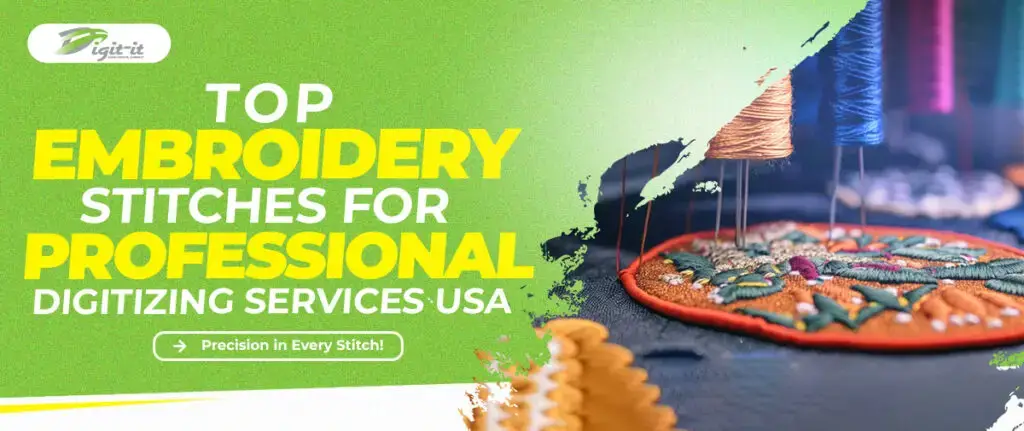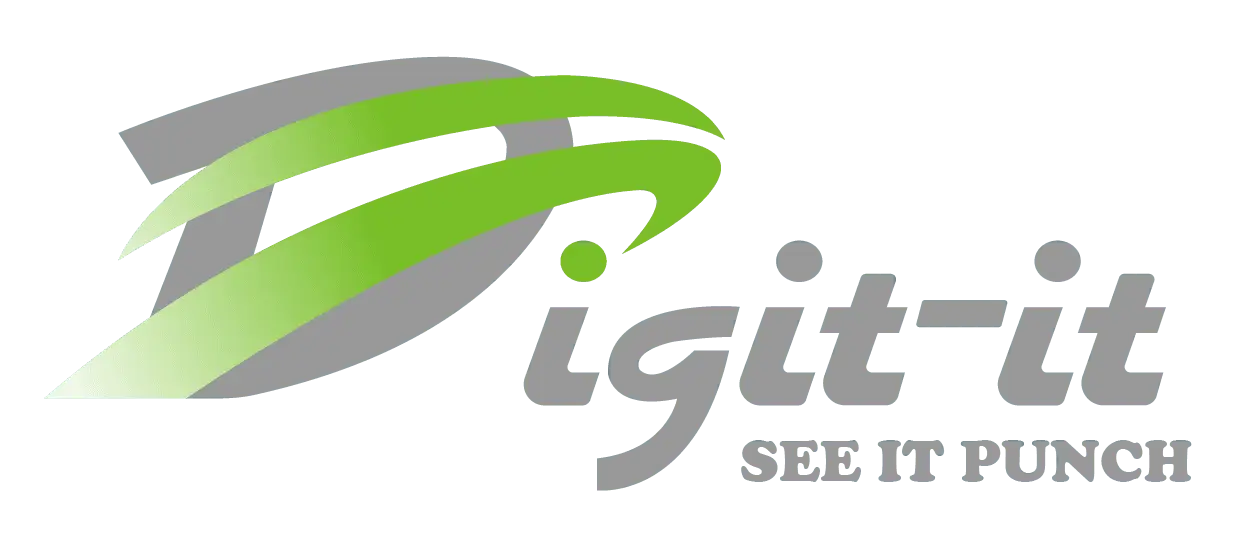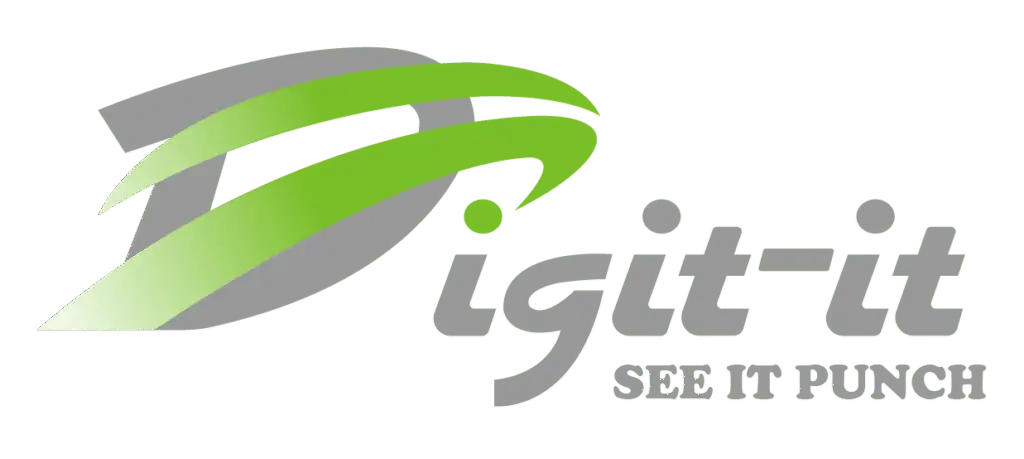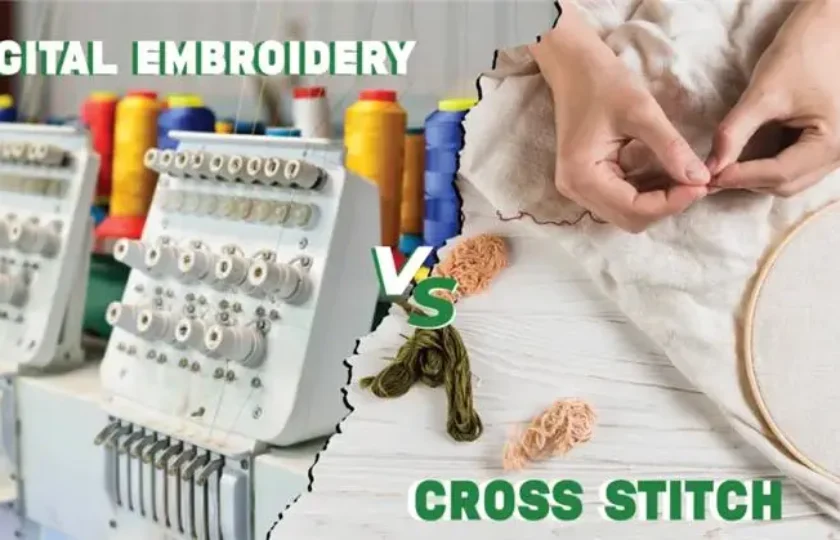Embroidery Stitch are pivotal for finalizing embroidery designs, as stitching is the key element of this activity. Compared to traditional times, for succeeding at the art of digital embroidery, it’s not necessary for you to be a professional in stitching manually. The older ways of creating embroidery designs required the embroidery maker to be an expert in stitching by hand. In the USA, digital embroidery is gaining popularity day by day due to a recent shift in the fashion industry.
This shift focuses on embroidered clothing for both men and women. The art of embroidery is not bound to any specific gender today, and customers order embroidery services for corporate uses. Businesses buy hundreds and thousands of embroidered logos and t-shirts for their branding and merchandising. In this blog, we will understand why embroidery stitching is essential and what kinds of embroidery stitches there are.
Types of Embroidery Stitches for Professional Digitizing
Embroidery is the best form of art created with thread and fabric. It requires a certain level of skill to master this art. The traditional embroidery makers are highly skilled and produce embroidery designs that look stunning and are crafted with a human mind and hand. On the other hand, for a large number of orders, digital embroidery comes in handy, which is embroidery done by means of an embroidery machine.
However, there are several types of embroidery stitches to get desired results. Let’s learn about the types of embroidery stitches there are in professional embroidery digitizing. Mastering each stitch type allows you the versatility that customers search for in their prospective service provider.
1. Satin Stitch
Satin stitch is one of the most commonly used embroidery stitches in digitizing embroidery. It creates a smooth, glossy, and slightly raised effect, making it perfect for lettering, logos, and decorative elements. The stitch length and density must be carefully adjusted to ensure a flawless finish, especially when working with machine embroidery designs.
2. Fill Stitch (Tatami Stitch)
Fill stitch, also known as Tatami stitch, is used to cover large areas with embroidery. It consists of closely packed rows of stitches that create a textured and even surface. This stitch is ideal for digitizing embroidery designs that require high coverage, such as embroidered patches, logos, or background elements. Adjusting stitch patterns and angles helps prevent fabric puckering and enhances the overall design quality.
3. Running Stitch
A running stitch is a simple, straight stitch commonly used for outlining designs and adding fine details to embroidery from a picture. Since it requires minimal thread usage, it is perfect for intricate linework, borders, or creating shading effects in embroidery digitizing. It is often employed in designs where a delicate, hand-stitched appearance is desired.
4. Zigzag Stitch
Zigzag stitch is a variation of the satin stitch but with wider gaps between each stitch, creating a more flexible and stretchable design. It is often used in machine embroidery designs for reinforcing edges, decorative borders, or when a looser stitch effect is required. This stitch works well on fabrics that have some stretch, ensuring durability and longevity.
5. Chain Stitch
Chain embroidery stitch forms interlocking loops that give a textured, rope-like appearance. It is frequently used in high-end custom embroidery digitizing for a hand-stitched effect, making it ideal for vintage or intricate embroidery patterns. This stitch is commonly seen in traditional designs, embroidered monograms, and artistic motifs.
6. Cross Stitch
Cross stitch involves forming small X-shaped stitches, often used to create pixelated or patterned embroidery designs. It is widely used in decorative embroidery and digitizing embroidery techniques for creating intricate motifs, text, or geometric designs. Cross stitch digitized designs are commonly seen in home décor embroidery, traditional patterns, and creative apparel.
7. Bean Stitch (Triple Running Stitch)
A bean embroidery stitch is essentially a reinforced version of the running stitch, with each stitch repeated multiple times for added thickness and visibility. It is particularly useful for bold outlines, enhancing the definition of embroidery from a picture, and adding durability to delicate areas of the design.
Why Choosing the Right Embroidery Stitch Matters
Selecting the right embroidery stitch is essential for achieving high-quality results. Different stitch types impact the durability, appearance, and texture of the final embroidery piece. Professional digitizing services carefully analyze the design, fabric type, and purpose before choosing the most suitable stitch type. With advanced technology, digitizing embroidery allows seamless conversion of intricate designs into stitch-ready formats, ensuring perfection in every detail.
Conclusion
Mastering different embroidery stitches is essential for producing high-quality embroidered designs. Whether you are looking to digitize embroidery or create machine embroidery designs, choosing the right embroidery stitch can significantly impact the final product. With advancements in embroidery technology, businesses and individuals can achieve professional results using embroidery digitizing services that cater to their specific needs.
Looking for the best embroidery digitizing services at affordable prices in the USA? Look no further, as Digit-IT brings professional digitizing services to you with the option of fully customized embroidery logos and digitized jackets with your favorite art.




